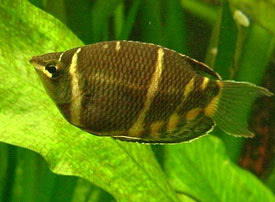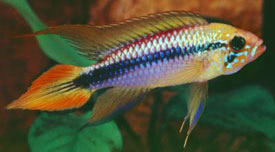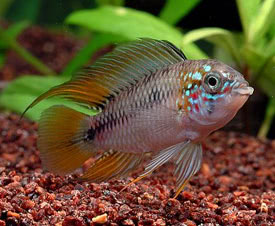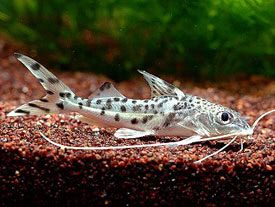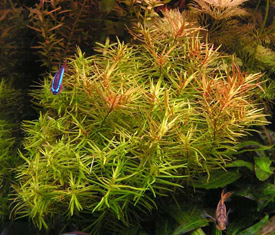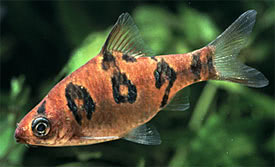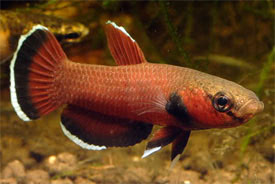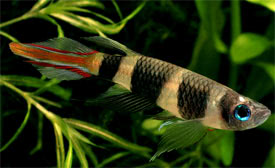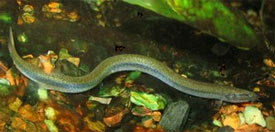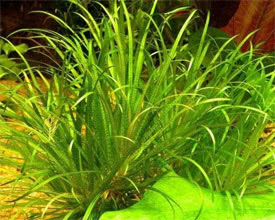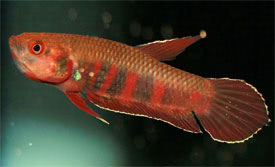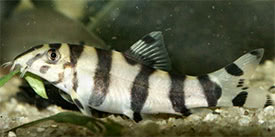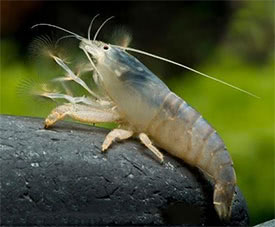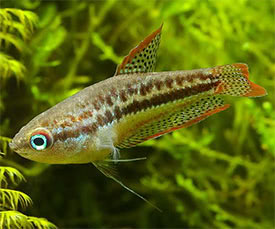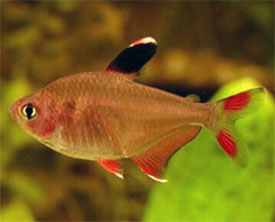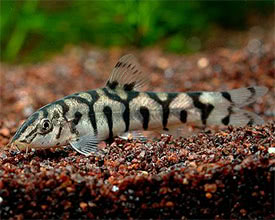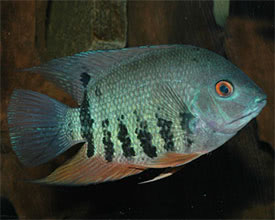
 Magyarul / Hungarian
Magyarul / Hungarian


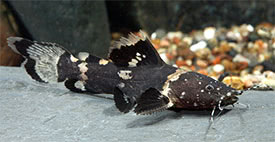

- Scientific name: Batrochoglanis raninus
- Synonyms: Pimelodus raninus, Pseudopimelodus raninus, Pseudopimelodus acanthochirus
- Common name: Bumblebee Jelly Catfish
- Group: Catfishes
- Habitat: South America; Amazon River basin: Bolivia, Brazil, French Guiana, Guyana, Peru and Suriname.
- Size: 10-12 cm
- Biotope: Found in streams and rivers usually in very shady and deep zones where the current is slow, the bottom is shady and the gravel is covered with plant debris.
- Social behavior: Not an aggressive catfish, but will try and eat fish that can fit into its mouth. Best kept with large and peaceful tankmates. Nocturnal fish that hides during daylight. It can be territorial with other bottom dwelling species.
- Diet: Omnivorous; It is a stalk-hunting catfish. The young fish feeds on microcrustaceans and aquatic insect larvae, while older fish shift its diet to fishes. In the aquarium all kinds of foods are accepted.
- Breeding: Unsuccessful in aquarium
- Tank: Minimum 150 litres
- Population: 2-3 fish for 250 litres
- Decoration: Use fine gravel or river sand as substrate with some dry leaf litter. Provide hiding places from roots or driftwood and rocks. Dim lighting is suggested.
- Temperature: 23-28 °C
- pH: 5.4-7.4
- Hardness: 1-10 NK°
- Lifespan: 8-12 years
Description: Bumblebee Jelly Catfish has a dark brown to black overall body color with a white to cream color collar behind the gill cover. A whitish marking is also present on the body just below the dorsal fin, and there is a light colored band (which may be incomplete) before the caudal peduncle and a pair of white markings on the caudal peduncle. There is also a creamy marking at the base of the adipose fin. The head is depressed with small eyes. Young fish can be confused with members of Microglanis, but Microglanis typically have much more extended light areas and the overall body is not as robust.
Most of the specimens in the aquarium hobby are exported from the Brazilian Amazon and are rarely grow beyond 12 cm. Because of their wide distribution and the great amount of size and coloration differences reported it is likely that this is either a very variable species or a collection of closely related species with similar color patterns.
External sexual differences are unknown, but females are probably more robust especially at the ventral area. Bumblebee Jelly Catfish breeding habits are also unknown.






